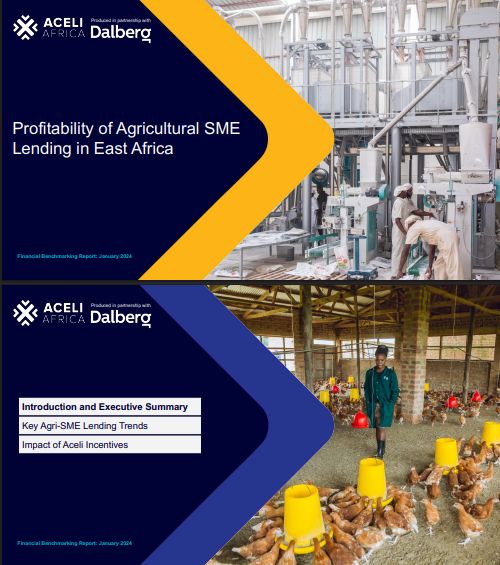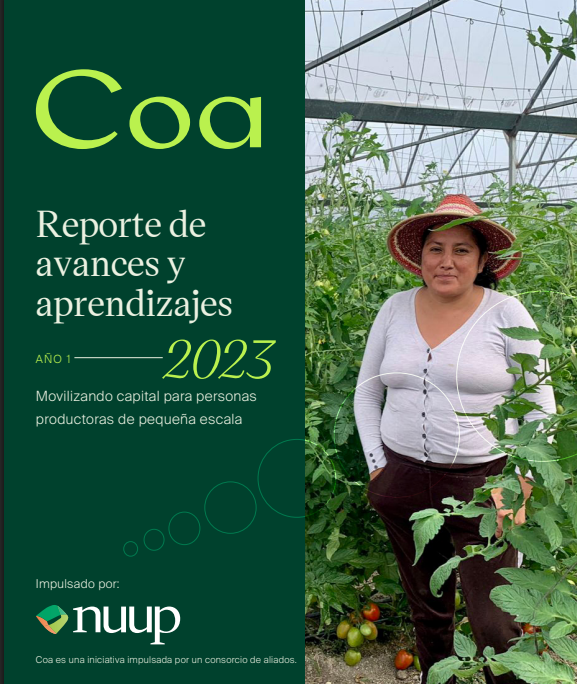Dalberg uses cookies and related technologies to improve the way the site functions. A cookie is a text file that is stored on your device. We use these text files for functionality such as to analyze our traffic or to personalize content. You can easily control how we use cookies on your device by adjusting the settings below, and you may also change those settings at any time by visiting our privacy policy page.
Global agriculture is at a critical juncture with climate impacts, severe soil degradation, and growing economic pressures threatening both farmer livelihoods and global food security. Food systems are currently responsible for over a quarter of global greenhouse gas emissions—and without decisive action, this number is expected to grow significantly. As projections warn that up to 90% of our land could become degraded by 2050—the need for a global shift toward sustainable farming practices has never been clearer.
Fortunately, the solutions already exist: Regenerative and agroecological farming practices have proven to be vital solutions for improving soil health, climate outcomes, biodiversity, and farmer livelihoods, enhancing the resilience of our food system. Yet, despite consensus around the need to shift to sustainable agriculture, access to appropriate finance to support the transition remains inadequate—particularly for smallholder farmers who are essential to global food supply chains.
The Global Financing Gap
Despite the clear urgency, only 1.5% of global public climate finance is allocated to sustainable food systems, which is a fraction of what is necessary. To truly drive the shift to sustainable agriculture, funding must increase tenfold. Yet, several challenges stand in the way of mobilizing finance at scale—particularly for smallholder farmers and climate-friendly agricultural models in emerging markets. While large-scale commercial agriculture in developed markets can offer more predictable returns, investment in sustainable, smallholder agriculture is often perceived as higher risk and lower return. Factors such as fragmented capital needs, limited collateral, and revenue volatility—combined with unfamiliarity among investors—continue to restrict capital flows to where it is needed most.
As a result, smallholder farmers, despite being the backbone of global food production, remain underserved and disproportionately affected by this financing gap. The world’s 600 million smallholder farmers, working on less than two hectares of land, produce roughly 30–34% of the global food supply, while cultivating just 24% of agricultural land. Yet, most financing available to smallholder farmers is poorly suited to their reality. Traditional lending models—with rigid repayment terms, risk-averse structures, and limited tailoring to agricultural cycles—are ill-equipped to support farmers through the years-long transition to regenerative practices, when incomes may initially dip. The small size of most smallholder financing needs further complicates access, making it difficult for larger financiers to deploy capital quickly and efficiently. Tailored, flexible financial mechanisms are critical to help farmers manage short-term risks while investing in long-term gains.
Catalyzing the Transition: The Case for Innovative Finance
There is significant value to be unlocked by helping smallholder farmers transition to sustainable agriculture. Innovative financial models—tailored to their unique risks and cash flow cycles—can catalyze this shift, improving livelihoods while advancing climate and food security goals.
Our work at Dalberg contributes to designing, evaluating and scaling innovative financing mechanisms that enable smallholder farmers to adopt regenerative and climate-smart agricultural practices. Across Sub-Saharan Africa and Latin America, we have witnessed impactful financial solutions that demonstrate the potential for broader application and scalability—such as Aceli Africa and Coa—addressing precisely the challenges smallholder farmers face. While Dalberg was not directly involved in the Bee Bond, we include it as a promising example of how international capital can be harnessed to support regenerative agriculture. Unpacking how these three proven financial innovations each tackles barriers to scaling sustainable agriculture offers insights for shaping the next generation of financial models.
Aceli Africa: Building the Finance Market for a Competitive Agriculture Sector in Africa
Aceli Africa has mobilized over US$150M towards underserved agricultural small and medium-sized enterprises (SMEs) that aggregate smallholder farmers’ produce and provide farmers with essential products and services. Aceli reduces the risk of lending by providing first-loss coverage and origination incentives to local financial institutions, as well as enhanced incentives for loans to agricultural SMEs that meet higher impact standards in the areas of food security, women and youth economic empowerment, and climate-smart and resilient agriculture. The organization also provides technical assistance to SMEs in business and financial management.
“When Aceli started, it increased our appetite for smaller loans. Thanks to the incentives, we’ve expanded to smaller and riskier segments we hadn’t targeted before.”
– Social lender
Initial findings from ongoing longitudinal studies indicate encouraging results from those served by Aceli’s partners, including SMEs seeing an average 31% in annual revenues, smallholder farmers reporting higher crop prices, improved access to inputs and credit, and better loan repayment capacity. As of March 2025, Aceli’s incentives had supported 3,427 agri-SME loans totaling $293M. Capital additionality is high with 61% of these loans going to first-time borrowers. SMEs accessing financing are growing topline revenues at an annual rate of 24%. Collectively, these businesses facilitate market access for 1.5 million smallholder farmers and provide 53K full-time jobs.
By the end of 2025, Aceli aims to mobilize a total of US $500M in capital at a 9:1 leverage ratio, increase the number of loans disbursed to 5,000, and reach 2.2 million smallholder farmers and workers.
Coa: Mobilizing Capital for Smallholder Farmers in Mexico
Coa is another notable example of extending financing to agricultural SMEs, taking a similar approach to Aceli. Coa was established to tackle low agricultural productivity, especially in south and south-east Mexico where rural and indigenous communities faced barriers to increasing their resilience. Evidence shows that in these regions, agricultural growth is 2-4x more effective at reducing poverty compared to other sectors.
Managed by Nuup, with support from The Nature Conservancy, WKKF, and USAID, Coa primarily supports smallholder farmers seeking to adopt sustainable agriculture practices. Coa provides origination incentives that reduce the cost of lending to smallholder farmers through existing financial institutions; it also delivers technical assistance to both agricultural SMEs in financial management, and to financial institutions for designing financial products that meet borrowers’ needs.
Coa’s model has seen great success in its first year, with close to US$7 million mobilized across 11 local financial institutions with a leverage ratio of 34:1, and close to 7,000 farmers reached. Coa plans to offer liquid guarantees to lenders, lowering the cost of serving smallholder farmers and further encouraging lending, alongside a tool to assess the impact of the sustainable transition on access to finance.
Bee Bond: Providing a Debt Solution for Pollinator Conservation in Africa
While local financiers play a key role in transition financing, international capital remains crucial for achieving the amount of finance needed for the sustainable agriculture transition. Innovative financial mechanisms looking to crowd in funding from larger sources of philanthropic and private capital have likewise begun to emerge.
Bee Bond is an innovative outcome bond that blends philanthropic and private funding to finance regenerative agricultural practices, focusing on pollinator-dependent commodities. Under the Bee Bond model, private investors purchase a bond but forgo their fixed coupon payments, which are used to fund farmer training in regenerative production. Investors receive outcomes-based payouts, financed by philanthropic funding, upon the achievement of specific conservation outcomes. Bee Bond is currently being designed for implementation in East Africa.
Philanthropic and development finance remains key
To catalyze the investments needed for the sustainable agriculture transition, philanthropic and development funding are crucial for spearheading innovative transition financing mechanisms. As proven by the outsized leverage ratios Aceli and Coa have achieved, these risk-tolerant, flexible modes of finance are effective for lowering the risk of lending to smallholder farmers, providing an efficient means to scale these mechanisms globally and accelerate the sustainable agriculture transition.
Recommendations for Moving Forward
These successful case studies provide actionable insights and pathways forward for DFIs, foundations, SMEs, and implementation partners who wish to support the transition of smallholder farmers to sustainable agriculture
- Develop Tailored Financial Products: Create flexible financial products that meet the cash flow realities and circumstances faced by smallholders who want to transition to sustainable practices.
- Implement Robust Risk Mitigation: Instruments like first loss guarantees and liquid guarantees can help overcome the risk perceptions of traditional financiers.
- Deploy Technical Assistance as Necessary: Targeted training in financial and business management can significantly enable a smallholder farmer’s capacity to successfully receive and manage financing and achieve sustainable growth.
- Understand the Gap between Perceived and Real Risk: Standardizing learning cycles and financial performance benchmarking of new financial mechanisms is critical for understanding the gap between perceived and real risk in the market.
Get in touch with us to discuss how stakeholders across the agricultural finance ecosystem can effectively close the funding gap, unlocking widespread adoption of sustainable agriculture and securing resilient global food systems.
Read more:
Towards Market Transparency in Smallholder Finance – Dalberg
Smallholders on the world stage: how private investment can help secure our food future – Dalberg
To learn more, contact:








